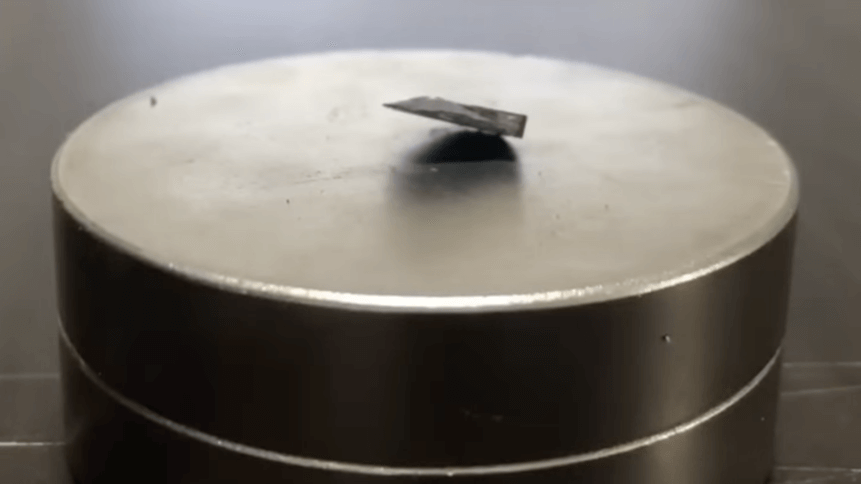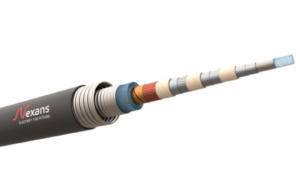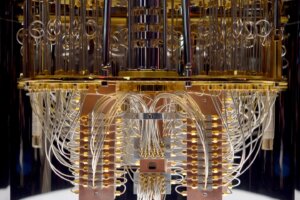
- Korean researchers claim room temperature superconductor discovery
- Superconductors have zero electrical resistance so are highly efficient
- If verified, applications include power grids, computing, and quantum tech
Just over a week ago, scientists and science enthusiasts around the world were sent into a state of shock, excitement, and tentative cynicism after a group of researchers from South Korea made an extraordinary claim: that they had created the world’s first room-temperature superconductor.
Superconductors are materials that can conduct electricity with zero resistance. In ordinary conductors, like copper wires, some energy is lost as heat when electricity flows through them as electrons collide with and repel each other.
But in superconductors, this loss of energy is completely eliminated. This makes them incredibly efficient conductors of electricity, meaning they can carry large amounts of electricity without generating wasteful heat or losing energy along the way.

Maglev trains float above the tracks using powerful superconductors, eliminating friction for high-speed travel. Source: Shutterstock
Why a ‘room-temperature’ superconductor?
Most superconducting materials must be at a very low temperature, often close to absolute zero (-459°F, -273°C), or very high pressure (more than 100,000 times atmospheric pressure) to exhibit superconductivity. This is because, in these extreme conditions, the electrons in the material pair up and form what’s known as Cooper pairs.
Since they are bound together, these pairs avoid scattering with each other and the lattice ions that would typically cause energy loss and resistance in a regular conductor. Therefore they can flow the material with zero resistance until the temperature is raised or pressure is lowered and they are disrupted.
Researchers have been working tirelessly to find materials or mechanisms that can maintain Cooper pairs at higher temperatures and lower pressures, but it is not easy. The intricate balance of interactions among the atoms and electrons in the target material must be precisely controlled to achieve the necessary stability under ambient conditions.
The current requirements for harnessing a superconductor mean they are expensive to make use of practically. However, they are used in critical applications where their unique properties outweigh the cost considerations, including particle accelerators and MRI machines.

MRI machines utilize superconducting magnets to create a strong magnetic field for detailed medical imaging. Source: Shutterstock
Over the years, a few different research teams have claimed to have discovered the ‘Holy Grail’ material that superconducts under ambient conditions, but they have never stood up under scrutiny, with papers being retracted and results proving unreplicable.
However, on July 22, a Korean team published two preprint papers on arXiv claiming that their new material, LK-99, “opens a new era for humankind”. They created LK-99 by mixing several compounds containing lead, oxygen, sulfur, and phosphorus and subjecting them to extreme heat for several hours.
This turned the powder into a dark grey solid which apparently exhibits zero resistance at temperatures less than 261°F (127°C) and at atmospheric pressure. Its superconductivity is also said to be proven by something called the Meissner effect, where the material expels a magnetic field from its interior. This causes the superconductor to levitate when placed above a magnet, and LK-99 was filmed partially doing so in a now-viral video.
Most of the time, demonstrating this effect is accompanied by cooling the material with liquid nitrogen so it becomes a superconductor, but for LK-99 this was not necessary.
However, these results have been met with speculation from other scientists. For one thing, in the video, only part of the LK-99 sample levitates over the magnet while the other edge remains in contact.
Some say that this effect could be due to impurities in the sample creating areas of superconductivity and is therefore not evidence that the material as a whole has the property. The researchers behind LK-99 also have not provided definitive experimental evidence to support their theory of how it exhibits room-temperature superconductivity.
The basic synthesis for LK-99 outlined in the paper, which doesn’t involve equipment any more complex than an oven and a pestle and mortar, has led kitchen scientists to try and replicate the experiment themselves, as well as experienced academics. So far, all of these have resulted in inconclusive results or outright failures.
One of my tangential takeaways on this LK-99 SC claim is that the general public seems oddly pumped about how “easy” the 4-day, multi-step, small batch, solid state synthesis is. Some of you haven’t had blisters from overusing your pestle and it shows.
— Jennifer Fowlie (@jennifer_fowlie) July 26, 2023
Quantum computing made cheap?
But why do we care about LK-99? What would a room-temperature superconductor actually mean for our tech?
Well, quite a lot. Materials that are superconductive under standard conditions would revolutionize electricity grids. According to estimates made by Massoud Pedram, an electrical engineering professor at the University of Southern California, our grids would be about 20 percent more efficient with superconducting wires.
An enormous amount of energy – approximately 949 million metric tons of carbon dioxide equivalents – is wasted every year due to electrical resistance in power lines. The lack of resistance would be beneficial to the global economy and environment.
‘High-temperature’ superconductors have been installed periodically in the past. For example, in 2021, Nexans used one to connect electricity grid substations in Chicago to help prevent power outages. Despite the name, they must be kept at about -328°F (-200°C) with a cryogenic jacket filled with liquid nitrogen, making them impractical for widespread adoption.

Nexans’ high-temperature superconducting cables offer efficient power transmission. Source: Nexans
But according to the US Department of Energy, even these high-temperature superconducting wires would save the US alone hundreds of billions of dollars annually in energy distribution costs.
But it’s not just electricity grids that a room-temperature superconductor would improve, as the humble PC would get a transformation too. Next-generation computers would benefit from ultra-high-speed digital interconnects and low-latency broadband wireless communications. They would also run on ultrafast and energy-efficient computer chips, leading to significantly faster processing speeds while consuming orders of magnitude less power.
Servers in data centers would experience a similar uptick in speed thanks to minimized resistance and energy loss in the computing components. As a result, businesses heavily reliant on data centers for their operations would experience increased efficiency and cost savings.

Many quantum computing experiments currently rely on high-temperature superconductors to manipulate and store qubits. Source: Shutterstock
Many quantum computing experiments currently rely on high-temperature superconductors to manipulate and store qubits. A qubit, short for quantum bit, is the fundamental unit of quantum information and forms the building block of quantum computers.
Unlike classical bits, which can represent either 0 or 1, qubits can exist simultaneously in a superposition of both states, enabling quantum computers to perform complex parallel computations.
YOU MIGHT LIKE

Quantum computing leaping into commercial use
Superconductors are essential for qubits because they exhibit zero electrical resistance and high coherence, allowing them to maintain their delicate quantum states without any disruption from external influences or energy loss. With room-temperature superconductors, there would no longer be a need to encase these qubits in costly and complex cryogenic cooling systems.
They would make quantum computers more practical, easier to scale, and open up new possibilities for solving complex problems with unprecedented computational power in multiple industries.
Other enterprise technologies that would receive a boost in efficiency from room-temperature superconductors include telecommunications infrastructure and IoT devices, while sensors, like those used in medicine, manufacturing, and aerospace, would experience increased sensitivity.
The papers from the South Korean researchers are now going through peer review, so time will tell whether their discovery is as ground-breaking as hoped.








